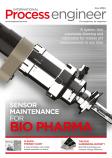David Mattice explains how to find the correct method for your process
There are several things to keep in mind when deciding what type of system to install for applying liquid onto your dry product. This is true for feed, pet food or snack products.
The system needs to be able to handle your product without causing degradation. Conversely, the fragility of your product will also dictate what type of system you choose.
The system should uniformly coat each particle with the same amount of material. This will enhance finished product quality and give you a consistent product. A high-quality product could easily result in increased sales.
Your new system should limit the fines that it generates during the production process. When doing surface coating, fines have more surface area and an affinity for absorbing those applied liquids. This may sound counterintuitive but it isn’t. If you take one particle that you are coating and measure the surface area, now crush that particle and if you could, measure the total surface area of the fines. You would find that the area of the fines is exponentially greater than the area of the single particle.
Whatever system you choose should at the very least maintain your current finished product quality. Ideally the new system will exceed your current product quality. Depending upon the system, you may also experience the added benefit of a reduction in ingredient usage due to the efficiency of this new system.
Finally, determine a realistic project budget. That budget will be a major factor in your decision-making process. Your budget may very well help to narrow your focus when reviewing the system choices, some of which are listed below.
Screw conveyor system
Applying liquid into a screw conveyor is one method. This sounds as simple as it is. The system uses spray nozzles to apply the liquid(s) directly onto the product as it passes through a screw type conveyor. These nozzles can be located directly over the conveyor or in a spray plenum located over the inlet of the conveyor. By using a plenum on the conveyor inlet, the dry product flow falls through a curtain of spray before entering the conveyor for further blending. Unfortunately, in either configuration, the nozzles will only be able to apply that initial spray of liquid onto the particles directly exposed to the spray. Any particles “buried” under the surface must rely on the mixing action of a blending conveyor to receive the coating. Therefore, the conveyor must have some type of mixing flight to continually mix and mingle the coated product. The size and type of nozzles used may also result in “spotty” coverage.
Another method is the open-ended tumble drum. This method is popular for snack type or fragile products. The interior of the drum has moulded flights that gently lift the product. As the drum rotates and the product is lifted, it eventually tumbles off the flights, creating a waterfall affect. The drum is canted from inlet to outlet, which conveys the product from one end to the other. Liquid is sprayed into the waterfall using a series of nozzles. The waterfall and tumbling effect exposes the dry particles several times to the liquid spray prior to discharging from the equipment. Note that this is an open-ended system and you will be displacing air when spraying into the unit. That displaced air can carry fugitive liquid particles onto and into the surrounding plant area. This can create housekeeping and possible plant safety issues.
Spinning discs system
Finally, there are systems that use a high-speed spinning disc or nebuliser to atomise the liquid and apply it onto the dry product. These machines have a large “curtain” of product that helps increase the number of particles that are exposed to the initial spray. Spinning disc or nebuliser machines are typically totally enclosed, so any fugitive particles fall right back into the production process and stay on the finished product. With spinning disc atomisers, liquid is delivered to the discs using a hollow shaft. Because there are no restrictions (as with nozzles or the nebuliser), these machines are excellent for applying viscous liquids or liquids with suspended solids. No nozzles or back pressure requirements for atomisation also means no low-end limitation to the amount of liquid that can be applied. A blending conveyor is used to finish the coating process.
Topical dry additives such as flavourings, seasonings, enzymes, vitamins or microbial products can be introduced with any of the coating methods listed above. To enhance the effectiveness of the dry additive, allow time for the liquids to evenly coat each particle and partially absorb prior to applying the additive. Remember that these additives can become airborne and “fugitive” during the coating process. Also consider if your process or equipment will allow you to “blend” the dry with your liquid and apply both simultaneously as a slurry.
There are a handful of conditions and several methods of liquid application to consider when it comes to applying liquids on to your dry product. Make the right choices for your application to produce a high-quality product and make your project a success.
David Mattice is with APEC USA


















